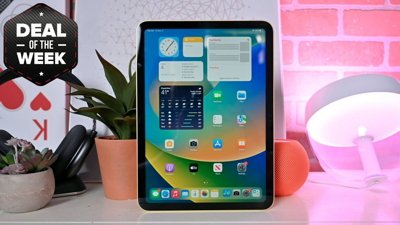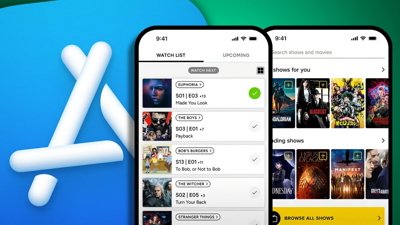While the likelihood of Apple releasing new iPhones this year is all but certain, a discussion between analysts and Apple's top brass has also dropped clues that the iPhone's pricing may not be static this year.
Cook and Schiller in particular have teased a "very exciting" 2009 for iPhones.
What these possible price changes would entail isn't divulged by the Apple executives, although Sacconaghi is quick to dampen rumors of an iPhone nano or a similar low-budget cellphone. Without naming any one of the executives as a source, he gathers from his investigations that the company isn't presently chasing such a concept.
Any future iPhone, he says, will probably have at least a web browser and access to the App Store, the latter of which has Cook, Oppenheimer and Schiller particularly "bullish" about the iPhone's success as it gives Apple an advantage over rival smartphone makers.
The firm's leaders are also adamant that iPhones won't come with hardware keyboards. A fixed set of keys reportedly makes it harder to implement different keyboards, such as for different languages, and would also make it harder for third-party developers hoping to use their own custom control schemes. Using the touchscreen as the primary input improves Apple's bottom line by letting it ship what's essentially the same phone across many different regions, the executives say.
No matter the changes to Apple's iPhone pricing structure, such a move wouldn't be uncharacteristic of the Cupertino, Calif. electronics giant. Each year of the iPhone's existence has had at least one major price shakeup: the iPhone's maximum price fell from $599 to $399 in 2007, while the iPhone 3G in 2008 not only reduced this top price to $299 but switched the behind-the-scenes profit model from revenue sharing with carriers to a heavy device subsidy.
But the Apple TV's position is considerably less optimistic, Sacconaghi warns. After his talk with the senior staffers, he understands that Apple views "lots of barriers" for the networkable media hub and doesn't see it as a current business cornerstone like it does iPhones, iPods and Macs.
Not to downplay the company's prospects, though, the Bernstein researcher says the management team is maintaining an "unwavering" level of belief in its guidance for the January-to-March quarter even as it has no intention of cutting prices; the upgraded plastic MacBook is selling well but is still being outsold by its more expensive aluminum cousins, according to the executives, who also see a lot of headroom in computer market share.
While Sacconaghi doesn't make many predictions, he repeats frequent expectations of an iPhone in summer and also believes Apple may update the iMac in March.
 Katie Marsal
Katie Marsal













 Chip Loder
Chip Loder
 Christine McKee
Christine McKee
 Malcolm Owen
Malcolm Owen
 William Gallagher
William Gallagher

 AppleInsider Staff
AppleInsider Staff
 Andrew Orr
Andrew Orr
 Amber Neely
Amber Neely






56 Comments
I don't think I learned anything by reading this...
My thoughts:
1) AppleTV is bleh. A PS3 serves a much better function than a AppleTV with the ability to play Blu-ray movies, stream music, play downloaded HDTV shows (both legal and torrented), as well as games. It's simply not that useful when any Blu-ray player + Netflix is cheaper in the long run!
2) New iPhones pretty much have to come out in June because people who signed their original 2-year iPhone contracts in 2007 will be up. I doubt they'd really want them to go elsewhere!
3) An iPhone will always include: 480x320 res screen and 3.5" touchscreen simply because of the App Store. Messing with either one will cause WAY too many problems when you've got thousands of applications and millions of iPhones/iPod Touches to support.
4) Because of point two, there will NEVER be an iPhone nano. It simply does not make sense, when the App Store is a cash cow in an of itself. Remember that Apple sells software mainly to sell hardware (similar to iTunes/iPod model). Doesn't make sense to cut off that revenue stream.
Anyway, a likely scenario is keeping the iPhone 3G as a "base" model and then updating with a more expensive model. This gives the appearance of the iPhone getting cheaper without hurting Apple's bottom line too much.
I would be really disappointed if Apple came out with multiple models (beyond the storage) for the iPhone. The first two made it really simple for customers to get and the price point of the 3G model has put it in so many hands. I work for AT&T and picking plans is really simple for people to understand. iPhone puts all this great stuff on their phone and they are more than likely to use it. It has helped spark the smart phone revolution more than anything and people love it. Don't mess with a good thing!
3) An iPhone will always include: 480x320 res screen and 3.5" touchscreen simply because of the App Store. Messing with either one will cause WAY too many problems when you've got thousands of applications and millions of iPhones/iPod Touches to support.
An interesting idea, but look at how they separated the iPod games store from the iPhone store. They can't stick with 480 x 320 forever, and surely they must have realised that beforehand?
How does the internal workings of the iPhone affect resolution? If ever there was an argument for resolution independence, the transition between different generations of devices is it...
How does the internal workings of the iPhone affect resolution?
The same code for resizable windows is there like in Cocoa on the desktop. However, due to there being only one screen size available now, I bet many developers ignore/don't use it.
Amorya